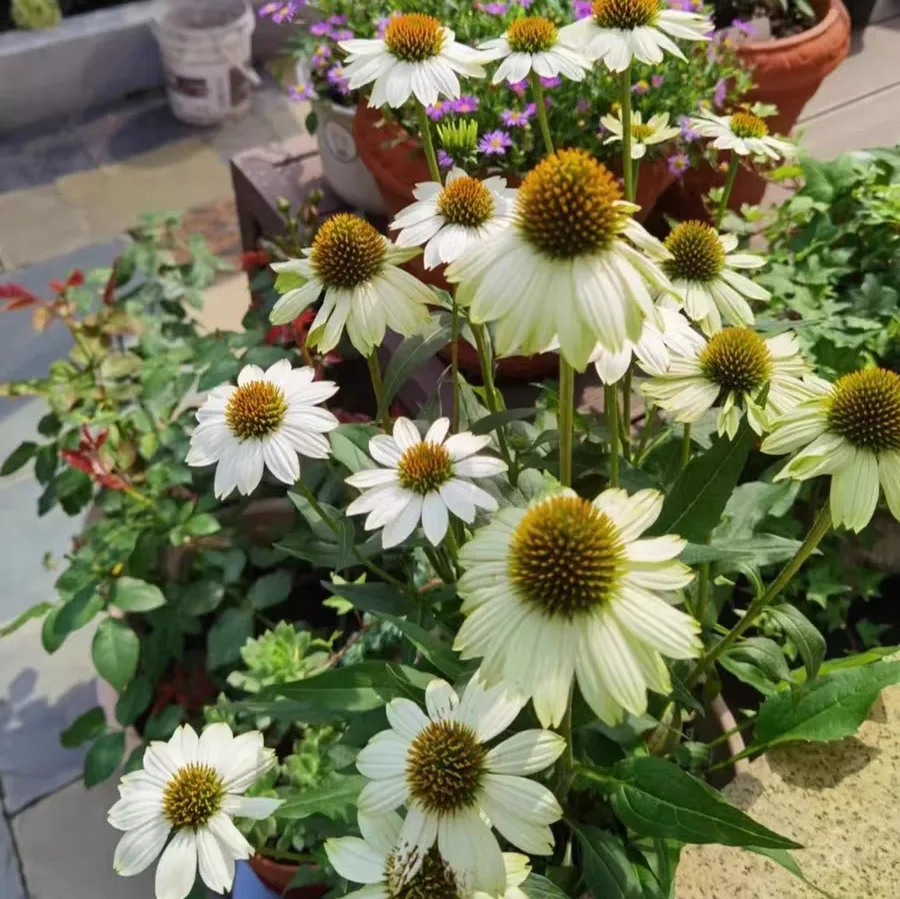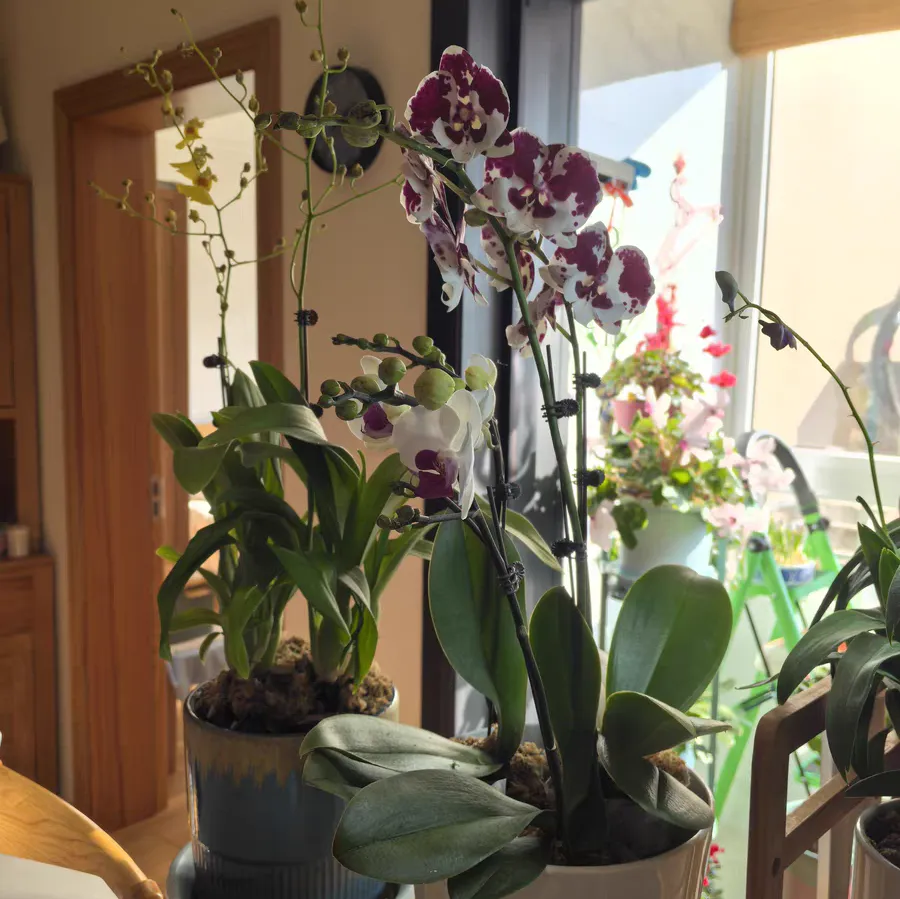Today, I'd like to give you a detailed introduction to Echinacea, a flower that is quite eye - catching in the garden.
Echinacea, whose scientific name is Echinacea purpurea, is a perennial herbaceous plant in the genus Echinacea of the Asteraceae family. Native to North America, it has been widely planted around the world due to its beauty and practical value.
The flowers of Echinacea are truly remarkable. They are large in shape, with a diameter of about 10 centimeters. The most striking part is the center, which has a unique conical protrusion. It is hard and textured, mostly orange - yellow in color, just like a plump pinecone, which is how it got its name.
Echinacea also holds an important position in the field of medicine. It contains a variety of active ingredients, such as polysaccharides, alkylamides, caffeic acid derivatives, etc. These ingredients endow Echinacea with the effect of immunomodulation. It can stimulate the human immune system, enhance the body's resistance, help prevent and relieve diseases such as colds and influenza, and alleviate the discomfort symptoms caused by respiratory tract infections. At the same time, it also has certain anti - inflammatory effects and has an adjuvant therapeutic effect on some inflammation - related diseases.
Planting Methods
Propagation by Sowing: Echinacea can be propagated by sowing. Spring sowing is usually carried out from March to April, and autumn sowing from September to October. Evenly scatter the seeds on the soil surface, then gently cover a thin layer of soil, about 0.5 - 1 centimeter thick. After that, water thoroughly to keep the soil moist. Under suitable temperatures, germination can occur in about 1 - 2 weeks.
Precautions for Maintenance
Light: Echinacea is a heliophilic flower and likes plenty of sunlight. It needs at least 6 - 8 hours of sunlight per day. In an environment with sufficient sunlight, the plants grow robustly and the flowers are more vivid. However, during the high - temperature summer months, appropriate shading can prevent the flowers and leaves from being sunburned.
Watering: Echinacea has relatively strong drought tolerance, but it also needs to maintain an appropriate amount of moisture during the growth period. Generally, water 2 - 3 times a week, and adjust according to the weather and the dry - wet condition of the soil. Avoid waterlogging to prevent root rot.
Fertilization: In the early stage of growth, apply a thin nitrogen - based fertilizer every 1 - 2 weeks to promote the growth of the plant's stems and leaves. Before the flowering period, increase the application of phosphorus and potassium fertilizers, such as potassium dihydrogen phosphate. Dilute it into a 0.2% - 0.3% solution and spray it once every 10 - 15 days. This helps to promote flower bud differentiation, increase the number of flowers and enhance the flower color.
Pest and Disease Control: Common pests and diseases of Echinacea include root rot, powdery mildew, and aphids. To prevent root rot, pay attention to soil drainage and avoid waterlogging. For powdery mildew, prevention can be achieved by strengthening ventilation and reducing humidity. When the disease occurs, fungicides such as triadimefon can be sprayed. Aphids can be controlled with pesticides such as imidacloprid. In daily maintenance, promptly clean up dead branches and leaves and keep the environment around the plants clean, which can effectively reduce the occurrence of pests and diseases.
The Efficacy and Function of Echinacea

Share with
Tagged in :




Leave a Reply